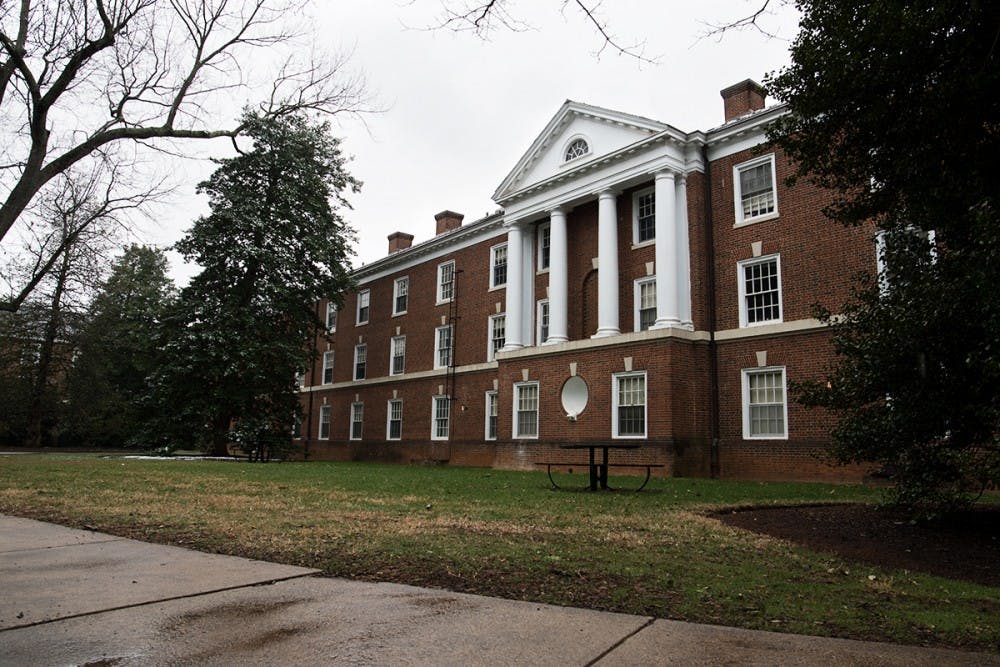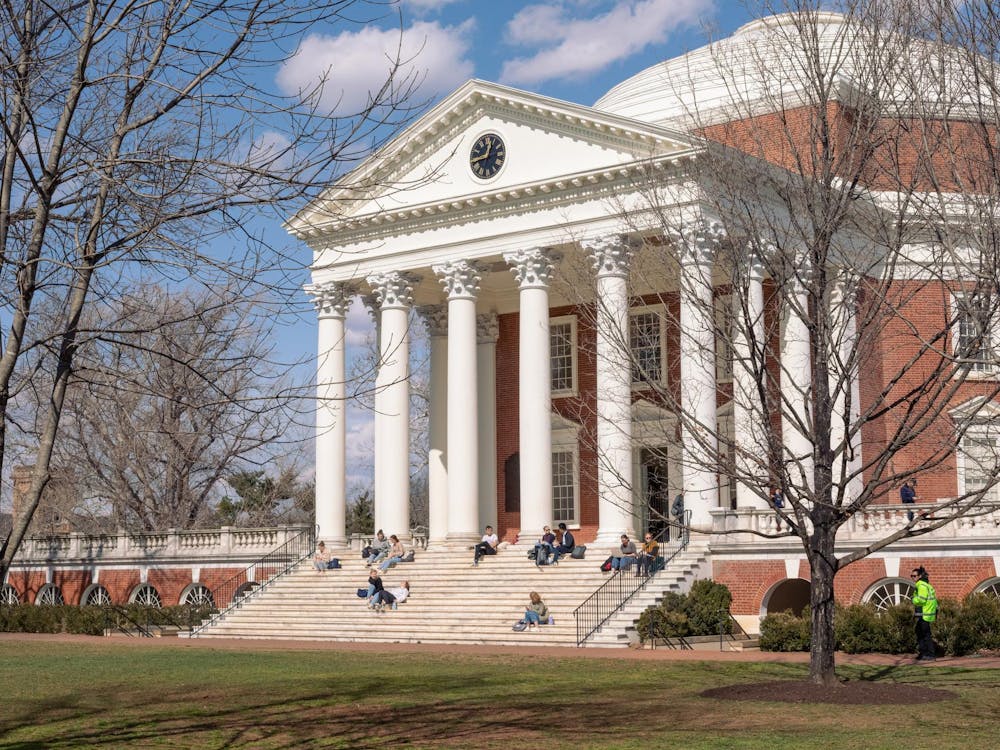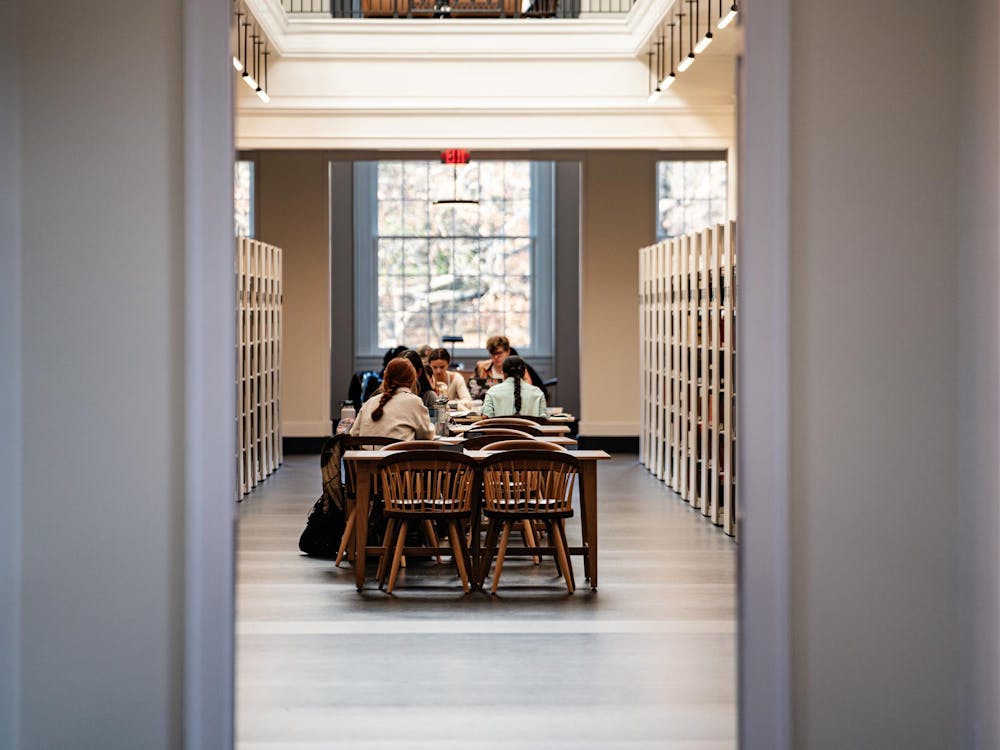Situated on Monroe Hill in the heart of University Grounds, the brick structure of Brown College stands tall — a microcosm of its own in an already active setting. Known throughout the University student body for its quirky, eccentric and tight-knit residential community, Brown College is the University’s example of a “counter-culture” residential space, or a dorm characterized by students whose interests and personalities lie outside a college’s stereotype.
Founded in 1986, Brown College was originally named Monroe Hill and was the first modern residential college at the University. In residential colleges, students live and have access to a number of academic and social opportunities, tailored to fit the character of each residential college.
Residential colleges were established at the University to closely mirror Thomas Jefferson’s ideal that “shared learning infuses daily life.” Jefferson designed the Academical Village as a tangible expression of the ideal so professors and students lived, taught and learned in the same space. The University has three residential colleges — Brown College, Hereford College, focused on sustainability and cultural diversity and the International Residential College, focused on giving both international and domestic students a taste of global culture. The three residential colleges are open to all undergraduate years, and have their own student self-governance, faculty fellows and Principals in residence.
Brown College was ultimately founded due to the high interest among both students and faculty to begin a program that gave students a continued sense of community after their first year and offered them a personal relationship with University faculty members.
A 1968 Student Council report expressed these desires and was one of the first catalysts behind the University’s work to establish a residential college program.
The report stated, “One of the major goals of a residential college system at the University would be to have housing play a truly significant role in a student’s education. The student would have the opportunity for closer, more informal relationships with faculty. The interchange of ideas between the young and the experienced could only be beneficial to a system of education.”
The University then considered establishing a residential college program in what is now the area near the Boar’s Head Resort west of Charlottesville in the late 1970s, but later abandoned the idea over financial and distance concerns.
Concrete plans to establish Monroe Hill Residential College began in 1985, headed by Alexander Sedgewick, the head of a subcommittee of a University Committee on Residential Life. It was renamed Brown College in 1994 following an endowment from by the Brown Family. Led by former University Board of Visitors Member W. Lyons Brown, the Brown family generated $2.5 million in pledges towards the endowment.The Brown Family had attended the University for four successive generations, and the college was named after the first four members of the family to attend the University.
Today, the residential college is now comprised of 300 undergraduate residents from all schools within the University — following the approval of admitting first-year students as residents in 1997— and two resident faculty scholars and 40 non-resident faculty fellows.
Applications to build community
The start of the process for hopeful Brown residents, or “Brownies,” involves the completion of an application separate from the Housing and Residence Life agreement required of all incoming first-year students as well as upperclassmen choosing to live on Grounds. Applications are stripped of any personal identifiers and current residents read the applications to handpick who will become their future community members.
Applications are also written by current Brown residents and feature questions many see as unusual and quirky. For example, one of two options for the “Courting Rituals” question on the 2010-11 Brown application read, “How would you ask someone to marry you if the number of puns used in the proposal is directly proportional to the likelihood that they would say yes?”
Gabby Carper is a fourth-year College student and Brown College’s “Grand Poobah,” or president. The Grand Poobah is elected by popular vote in an annual Brown-wide election, and is referred to by a name other than “president” due to the theory that individuals in positions of power would find it harder to abuse power under a title different than the norm.
Carper said that the student-driven process of writing applications and selecting applicants plays an important role in cultivating the character of Brown and generating residents who are invested in the Brown community.
“[The application] is an extra thing to fill out, but that helps us to know that every member of Brown chose to live here,” Carper said. “It is also an application remade and scored by current members of the community every year, which allows the questions to stay eccentric, fun and fresh.”
Ja’Mir Smith, a second-year College student and Brown’s public relations co-chair, said Brown’s application not only provides a glimpse into Brown culture, but also assists to maintain an inclusive and diverse makeup among residents.
“The application itself is the first opportunity to see Brown without even stepping inside,” Smith said. “Input and questions made on the application are created by current and former Brownies in an effort to maintain the inclusive and diverse appeal of Brown.”
Aileen Zhang, a first-year College student and Brown Governance Board portal representative, said the uniqueness of the application ensured potential residents wanted to live in Brown for more than just its proximity to Central Grounds.
“I feel like [the application] really lets you show off your personality,” Zhang said. “It does an extra step to make sure you actually want to be there.”
Once a student is accepted into Brown, they are integrated into a diverse, multi-faceted community of other students bound by the same goal — to foster a tight-knit and inclusive community within the residential college.
“In Brown we have one of the most diverse groups of people gathered together on Grounds,” Carper said. “Each member of our community has some kind of unique interest that they're passionate about and wants to share with others. We have both the want and the means to share all of our interests with each other and find our own place within U.Va while still maintaining our individuality.”
While Brown College may attract students with diverse interests, the college does not keep track of racial demographics, according to Countess Hughes, Housing and Residence Life’s assistant director for assignments.
Zhang said from her first day at Brown, she felt welcomed by the community of residents there.
“Starting from the first day, everyone was really welcoming,” Zhang said. “They had a barbecue the first day and upperclassmen just came over and introduced themselves to all the first years.”
However, Zhang said she feels Brown lacks in providing first-year students with the typical first-year experience. Though ultimately, she said she would have chosen to live in Brown regardless.
“I feel like one of the problems [is] that you’re really missing a first-year experience,” Zhang said. “We don’t really have that experience as much. I feel like there’s a trade-off of sorts, but I would choose Brown every time.”
Shared learning infusing daily life
While community in Brown plays a large part in a resident’s experience, a resident is also able to partake in a number of curricular and extracurricular events in order to enrich and strengthen the college experience. Michael Wellmon, Brown College principal and associate professor of German Studies, said Brown integrates the varying aspects of a resident’s life in order to facilitate a dynamic, lasting experience.
“It’s not simply a one year, one semester experience and then they live off campus,” Wellmon said. “Instead of having an absolutely distinct curricular and extracurricular life, it’s much more wrapped up and bound together.”
The myriad of curricular and extracurricular activities available to residents include short courses — semester-long, typically one-credit classes specifically for Brown residents — Great Books seminars, social outings and monthly banquets. Another opportunity for Brown residents is a special meal plan with a community dining area in Newcomb Dining Hall modeled after residential colleges at the University of Cambridge and Oxford University, which have their own dining halls. Brown also has its own student self-governance board, with elected officers responsible for a budget upwards of $35,000. The budget includes allocation for both curricular and extracurricular opportunities.
According to Smith, nearly 50 students work throughout the school year to establish Brown as a successful model of student self-governance at the University.
“With 46 members spreading across 21 different offices, GovBoard has a wide assortment of members working to keep Brown a model in student self-governance,” Smith said.
Carper said Brown’s Governance Board works to both continue established events at Brown and encourage residents to use their diverse set of interests to create new events for the community to become involved in.
“Our Governance Board is completely student run, with officers and co-chairs of all years coming together to create events for the whole community,” Carper said. “Although we have some staples like [Hauntings on the Hill] and Faculty lunches, residents are encouraged to create new events every year, combining their creativity with their own passions to give all community members a unifying experience.”
Continued support for Brown
Despite the nationwide closures of other “counter-culture” dorms, satisfaction among Brown residents remains to be high. According to a 2015 Housing Master Plan finding presented to the University’s Board of Visitors, 87 percent of Brown residents were satisfied with their living situation. This was the fourth-highest level of satisfaction behind the Lawn, the Range and Casa Bolivar.
Carper said she believes residential spaces like Brown are essential in creating diverse, well-rounded communities in a university setting.
“Brown has defined my time at U.Va. and has allowed me to embrace all aspects of my personality no matter how quirky or strange,” Carper said. “I think that without communities like this, schools are doomed to be full of cliques based on majors or age rather than a coming together of diverse interests and passions.”
Wellmon also said that he believes “counter-culture” dorm models like Brown are essential in providing a well-rounded experience for college students.
“[Counter-culture dorms] provide a crucial model for what it’s like to mix curricular and extracurricular life at a place like U.Va.,” Wellmon said. “I think at Brown, those mix and match in really fascinating ways and models a community that can be very reflective, very quirky, very interesting.”
Wellmon said, to his knowledge, there has never been a time when the residential model of Brown has been in danger of extinction, and his experience with the Office of the Dean of Students only reflects support for the Brown model.
“To my knowledge, it’s been successful,” Wellmon said. “In my experience with Dean [of Students Allen] Groves, there’s only the most fundamental and strong support from him and a desire to continue supporting Brown.”





